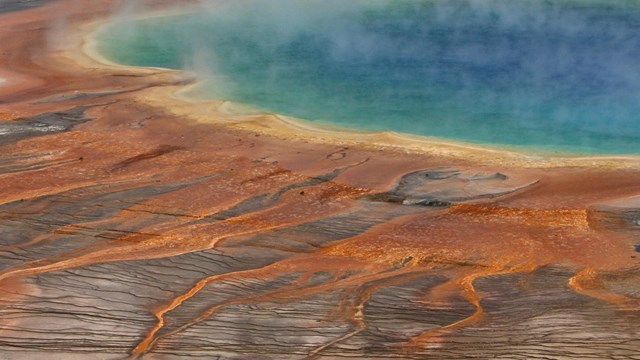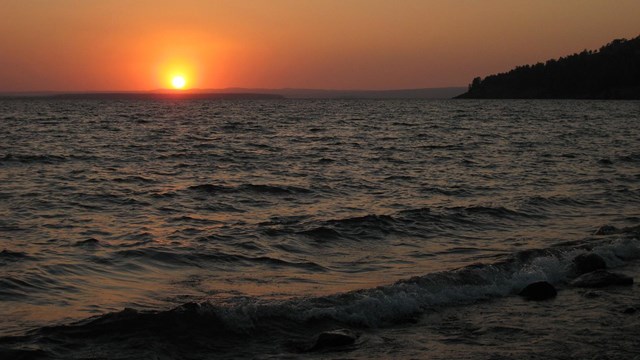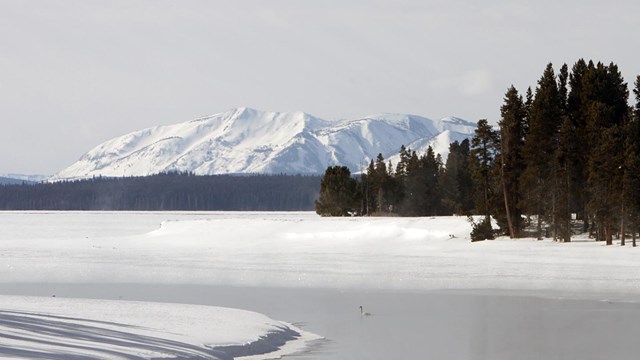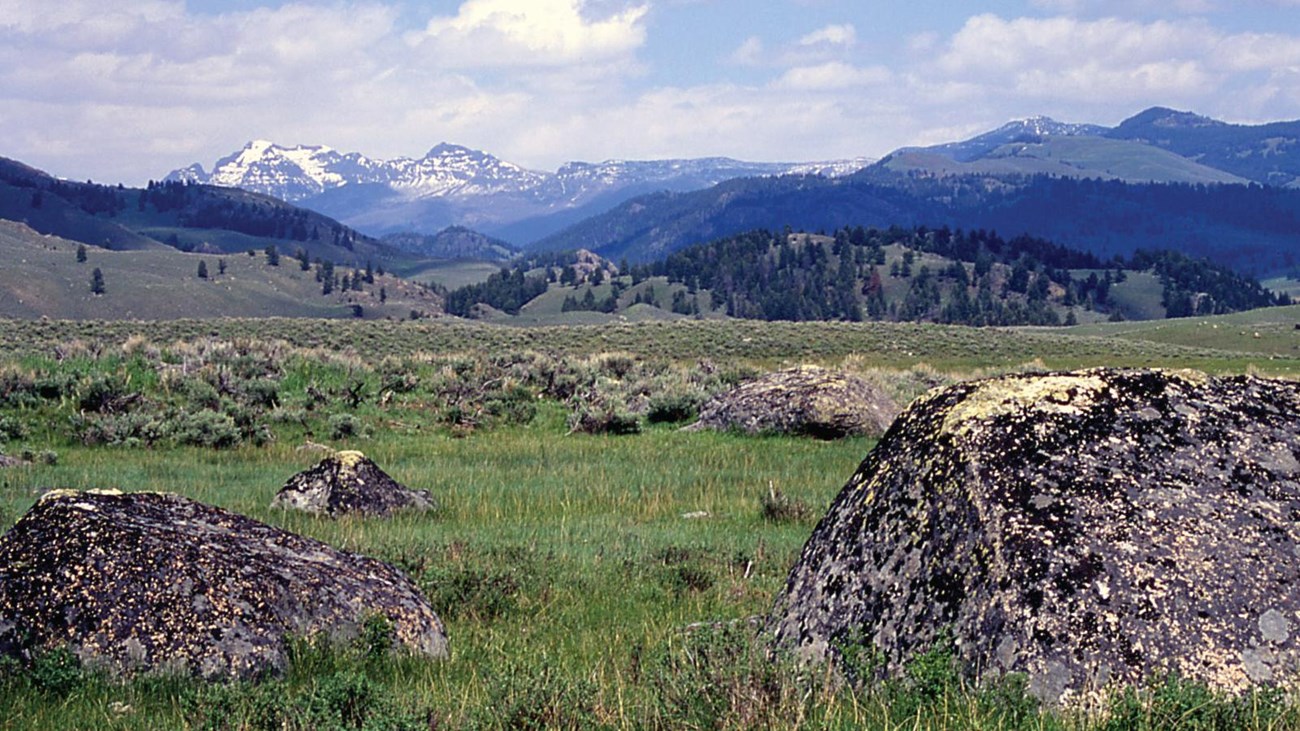
NPS / Diane Renkin 
USGS / Lisa Morgan Until the late 1990s, few details were known about the geology beneath Yellowstone Lake. In 1996, researchers saw anomalies on the floor of Bridge Bay as they took depth soundings. They deployed a submersible remotely operated vehicle (ROV) equipped with photographic equipment and sector-scan sonar. Large targets appeared on the sonar image, then suddenly very large, spire-like structures appeared in the photographic field of view. These structures looked similar to hydrothermal structures found in deep ocean areas, such as the Mid-Atlantic Ridge and the Juan de Fuca Ridge. The structures also provided habitat for aquatic species such as fresh-water sponges and algae. Lake-bottom Surveys From 1999 to 2007, scientists from the US Geological Survey and a private company, Eastern Oceanics, surveyed the bottom of Yellowstone Lake using high-resolution, multi-beam swath sonar imaging, seismic reflection profiling, and a ROV. The survey confirmed the northern half of the lake is inside the 640,000-year- old Yellowstone Caldera and mapped previously unknown features such as large hydrothermal explosion craters, siliceous spires, hundreds of hydrothermal vents and craters and fissures. The survey also mapped young previously unmapped faults, landslide deposits, and submerged older lake shorelines. These features are part of an undulating landscape shaped by rhyolitic lava flows that filled the caldera. The southern half of the lake lies outside the caldera and has been shaped by glacial and other processes. The floor of the Southeast Arm has many glacial features, similar to the glacial terrain seen on land in Jackson Hole, south of the park. 
USGS / Lisa Morgan These new surveys give an accurate picture of the geologic processes shaping Yellowstone Lake and determine geologic influences affecting the present-day aquatic biosphere. For example, hydrothermal explosions formed craters at Mary Bay and Turbid Lake. Spires may form similarly to black smoker chimneys, which are hydrothermal features associated with oceanic plate boundaries. 
UWS/UWM Great Lakes Water Institute Spire Analysis With the cooperation of the National Park Service, scientists from the University of Wisconsin–Milwaukee collected pieces of spires and a complete small spire for study by several teams. They conducted a CAT scan of the spire, which showed structures seeming to be conduits, perhaps for hydrothermal circulation. When they cut open the spire, they confirmed the presence of conduits and also saw a layered structure. Tests by the US Geological Survey show that the spire is about 11,000 years old, which indicates it was formed after the last glaciers retreated. In addition to silica, the spire contains diatom tests (shells) and silica produced by underwater hydrothermal processes. The spire’s interior shows evidence of thermophilic bacteria. Scientists say this suggests that silica precipitated on bacterial filaments, thus playing an important role in building the spire. Both research projects expanded our understanding of the geological processes at work beneath Yellowstone Lake. Additional study of the spires and other underwater features will continue to contribute to our understanding of the relationship between these features and the aquatic ecosystem. External Resources

Hydrothermal Systems
Yellowstone's hydrothermal systems are the visible expression of the immense Yellowstone volcano. 
Yellowstone Lake Archeology
The earliest intact cultural deposits in the park have been found at a site on the shore of Yellowstone Lake. 
Sound Library-Yellowstone Lake in Winter
Listen to the rare, wintertime song of Yellowstone Lake as the ice reacts to changing temperatures. ResourcesCuhel, R. et al. 2005. The Bridge Bay spires. Yellowstone Science. 12(4): 25–40. Morgan, L. et al. 2003. The floor of Yellowstone Lake is anything but quiet. Yellowstone Science. 11(2): 15–30. Morgan, L., ed. 2007. Integrated geoscience studies in the greater Yellowstone area—Volcanic, tectonic, and hydrothermal processes in the Yellowstone geoecosystem. USGS Professional Paper 1717. pubs.usgs.gov/pp/1717/ 
Geology
A volcano, geysers and other thermal features, earthquakes, and glaciers shape Yellowstone's landscape. |
Last updated: April 18, 2025
